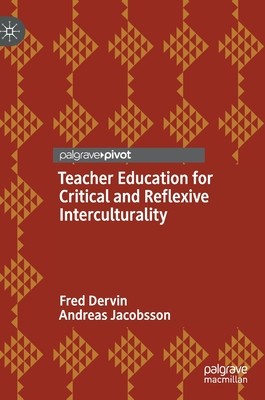
- We will send in 10–14 business days.
- Author: Fred Dervin
- Publisher: Palgrave Macmillan
- ISBN-10: 3030663361
- ISBN-13: 9783030663360
- Format: 14.8 x 21 x 1.1 cm, kieti viršeliai
- Language: English
- SAVE -10% with code: EXTRA
Teacher Education for Critical and Reflexive Interculturality (e-book) (used book) | bookbook.eu
Reviews
Description
1. Introduction: setting the stage
SECTION ONE: FRAMING INTERCULTURALITY FROM CRITICAL AND REFLEXIVE PERSPECTIVES FOR TEACHER EDUCATION AND TRAINING
Chapter 1: Why use the word interculturality and not something else? What are the meanings of interculturality today?
Chapter 2: Why does it really matter? What is interculturality all about in education? What are its goals?
Chapter 3: What should teachers know about the idea of interculturality?
Chapter 4: What should/could teachers learn to do with interculturality?
Chapter 5: What concepts to use?
SECTION TWO: EDUCATING AND TRAINING FOR REFLEXIVE AND CRITICAL INTERCULTURALITY: STEPS AND GOOD PRACTICES
Chapter 6: Step 1: Interculturality from within
Chapter 7: Step 2: Interculturality and imaginaries
Chapter 8: Step 3: Interculturality and language
Chapter 9: Good practice 1: Using textbooks to explore interculturality
Chapter 10: Good practice 2: The media as an educational resource to rethink interculturality
Chapter 11: Good practice 3: Fiction and art as a support to develop a sense of interculturality
CONCLUSION
EXTRA 10 % discount with code: EXTRA
The promotion ends in 22d.18:59:45
The discount code is valid when purchasing from 10 €. Discounts do not stack.
- Author: Fred Dervin
- Publisher: Palgrave Macmillan
- ISBN-10: 3030663361
- ISBN-13: 9783030663360
- Format: 14.8 x 21 x 1.1 cm, kieti viršeliai
- Language: English English
1. Introduction: setting the stage
SECTION ONE: FRAMING INTERCULTURALITY FROM CRITICAL AND REFLEXIVE PERSPECTIVES FOR TEACHER EDUCATION AND TRAINING
Chapter 1: Why use the word interculturality and not something else? What are the meanings of interculturality today?
Chapter 2: Why does it really matter? What is interculturality all about in education? What are its goals?
Chapter 3: What should teachers know about the idea of interculturality?
Chapter 4: What should/could teachers learn to do with interculturality?
Chapter 5: What concepts to use?
SECTION TWO: EDUCATING AND TRAINING FOR REFLEXIVE AND CRITICAL INTERCULTURALITY: STEPS AND GOOD PRACTICES
Chapter 6: Step 1: Interculturality from within
Chapter 7: Step 2: Interculturality and imaginaries
Chapter 8: Step 3: Interculturality and language
Chapter 9: Good practice 1: Using textbooks to explore interculturality
Chapter 10: Good practice 2: The media as an educational resource to rethink interculturality
Chapter 11: Good practice 3: Fiction and art as a support to develop a sense of interculturality
CONCLUSION


Reviews